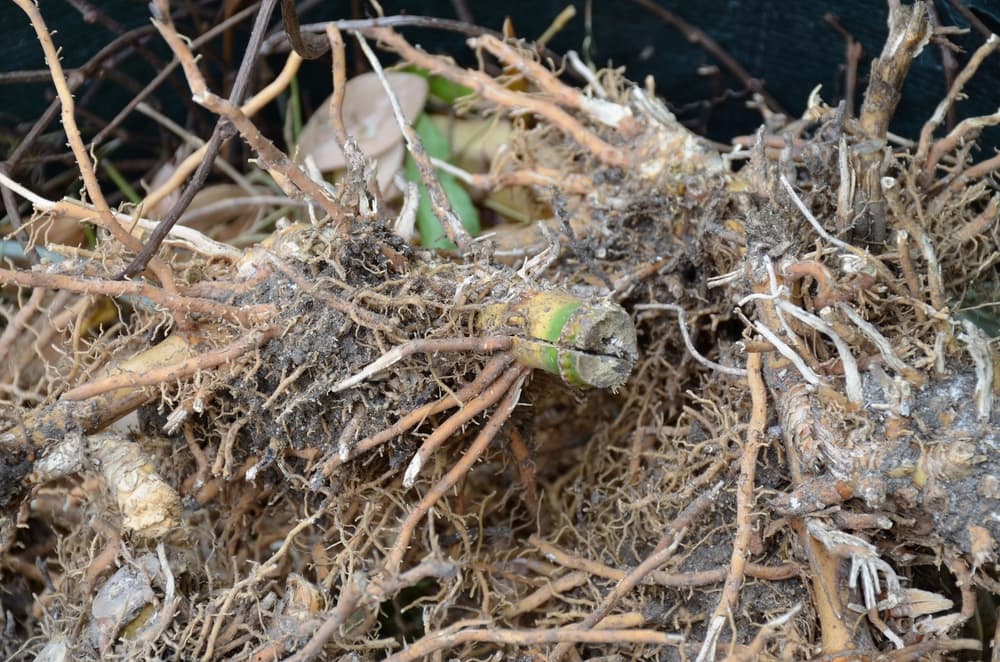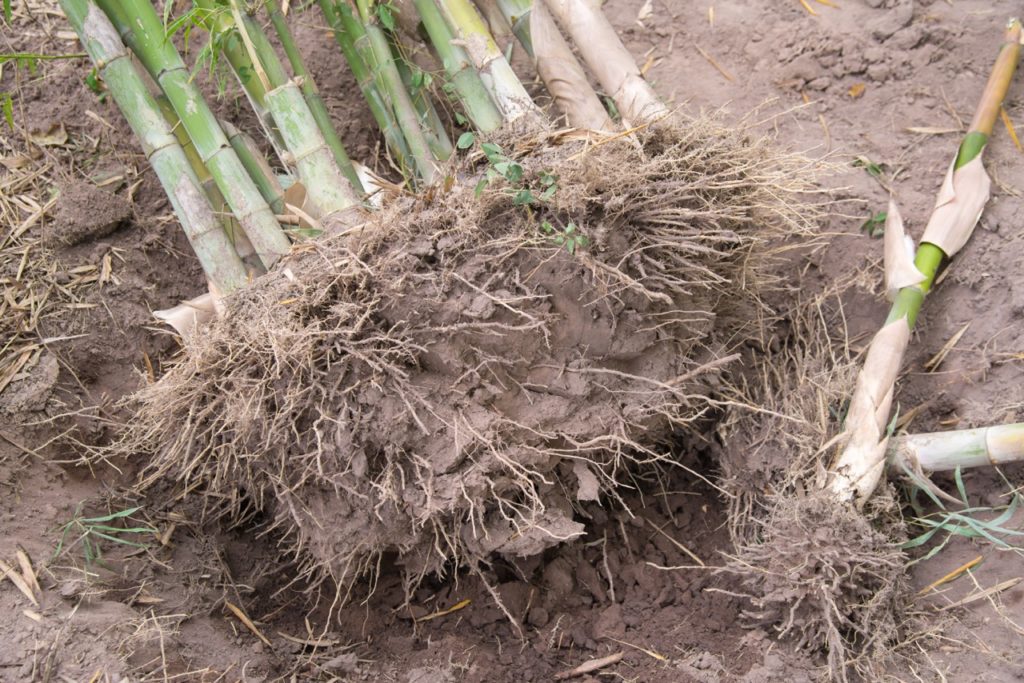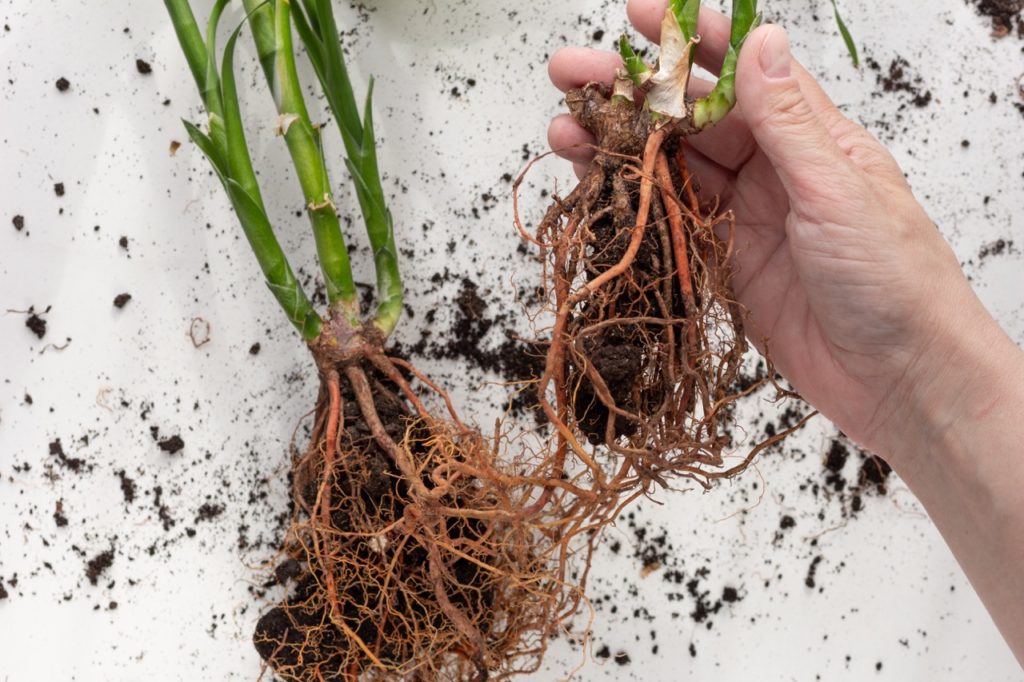Lifting And Dividing Your Bamboo Plant Can Keep Growth In Check – Here’s How

PERENNIALS > BAMBOO > DIVISION

Elizabeth is a Permaculture Garden Designer, Sustainability Consultant and Professional Writer, working as an advocate for positive change. She graduated from the University of St. Andrews with an MA in English and Philosophy and obtained a Diploma in Applied Permaculture Design from the Permaculture Association.
Reviewed By COLIN SKELLY

Colin is a Horticulturist and Horticultural Consultant with experience in a range of practical and managerial roles across heritage, commercial and public horticulture. He holds the Royal Horticultural Society’s Master of Horticulture award and has a particular interest in horticultural ecology and naturalistic planting for habitat and climate resilience.
Contributions From KERRI DALL
BAMBOO GUIDES
Container Growing
Division
Overwintering
Pruning
Removal
Root Barriers
Sowing
Varieties
Bamboo can be a beautiful and very useful plant to grow in your garden.
However, many larger bamboos, especially running varieties, can become invasive, and even existing clumps of non-spreading types can easily become overgrown.
One key job which you might wish to undertake when growing bamboo in your garden is the process of lifting and dividing an existing bamboo plant.
This can help to keep growth in check and offers the chance to grow more bamboo plants – or gift them to friends or neighbours.

The process is surprisingly simple:
- Choose a bamboo to lift and divide.
- Lift the bamboo plant from the ground.
- Divide the bamboo into sections using a saw, axe or mattock to separate the rhizomes.
You’ll find a more detailed explanation of this simple process below.
| Difficulty | Easy |
| Equipment Required | Bamboo, spade, saw or axe |
| When To Divide | March to May |
1) Find Your Bamboo Plant
The first step involves thinking about the bamboo that you might wish to lift and divide.
Decide at this stage why lifting and dividing your bamboo is a good idea and make sure you are clear about your purpose and goals.
Kerri from Scottish Bamboo advises: “Bamboo is best planted from a small, pot-grown plant and allowed to establish in its final environment”.
Therefore, you need to make sure you are lifting your bamboo plant for a good reason, otherwise this task might damage the plant.

Lifting and dividing a bamboo plant is usually done in order to:
- Renovate and ease the congestion of an existing clump.
- Propagate new bamboo plants to place elsewhere in the garden, give away or sell.
- Remove a bamboo that is growing where it is not wanted.
2) Lift From The Ground
Lifting bamboo can sometimes be a challenging process and you may not be able to carry out this task on your own.

If you are planning to divide a smaller bamboo plant, simply ease a spade or other tool under the roots and lift the plant out of the soil.
Where the bamboo is much larger, you may have to unearth and remove sections, one at a time, dividing them from the plant while the bulk of it is still in the soil.
3) Divide The Rhizomes
Smaller bamboo plants can often be divided into sections by cleaning off the rhizomes as best you can and taking a saw to the roots.
Each section with a rhizome and some above-ground growth should ultimately grow into a new plant if you want it to do so.
If you simply wish to remove the bamboo from your garden, you might not need to divide smaller bamboo at all, but splitting larger plants into sections can make removal easier, even if you don’t plan to replant the pieces elsewhere.
With larger bamboo, especially those that you have not been able to remove from the soil, you may have to separate sections (either to dispose of or to replant) with an axe or mattock.
“I find a mattock the best tool for removing bamboo,” shares Master Horticulturist Colin Skelly.

“It doesn’t root deeply but is remarkably reluctant to be removed from the soil!
“When using an axe or saw to divide clumps, don’t use your best tools.
“I have an old folding saw that I use for sawing roots to avoid blunting the blade for pruning jobs.”
Use whichever tool you decide on to chop down through the rhizomes and separate sections off one at a time.
If you plan on replanting and are dividing the plant as a means of propagation, it is best to choose healthy young sections from around the edges of an existing clump to replant.
“Always give bamboo sufficient space around it when first planted” advises Kerri Dall.
“At least 1m is recommended, as it will quickly grow and fill the space”.
Plant out your new divisions where you wish to grow them and water in well.

